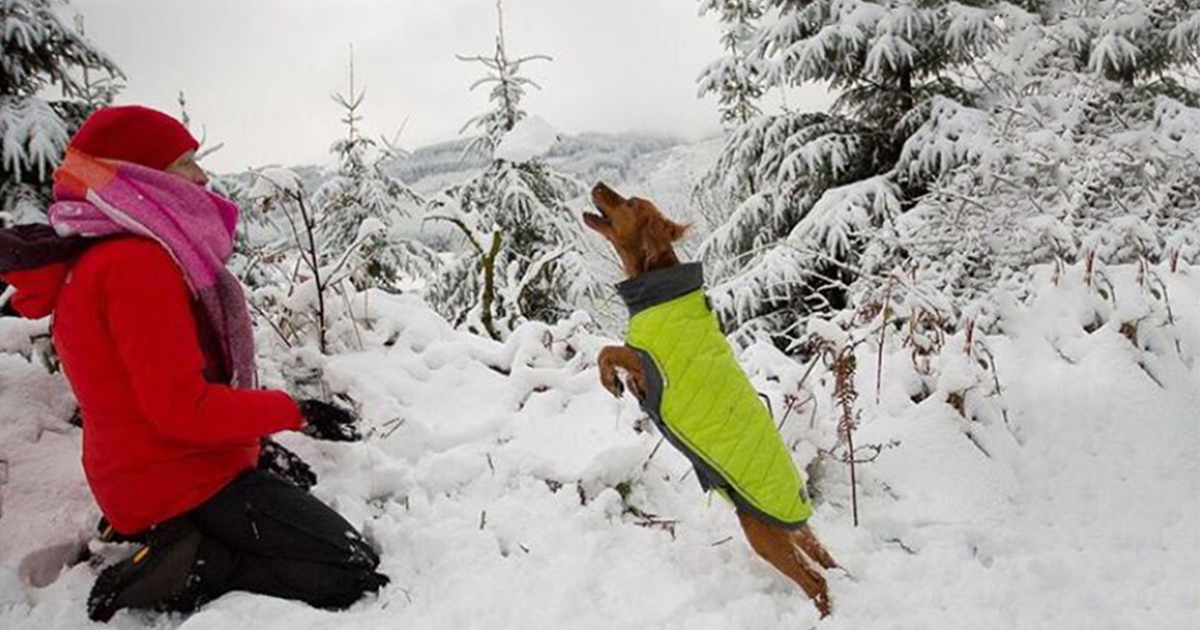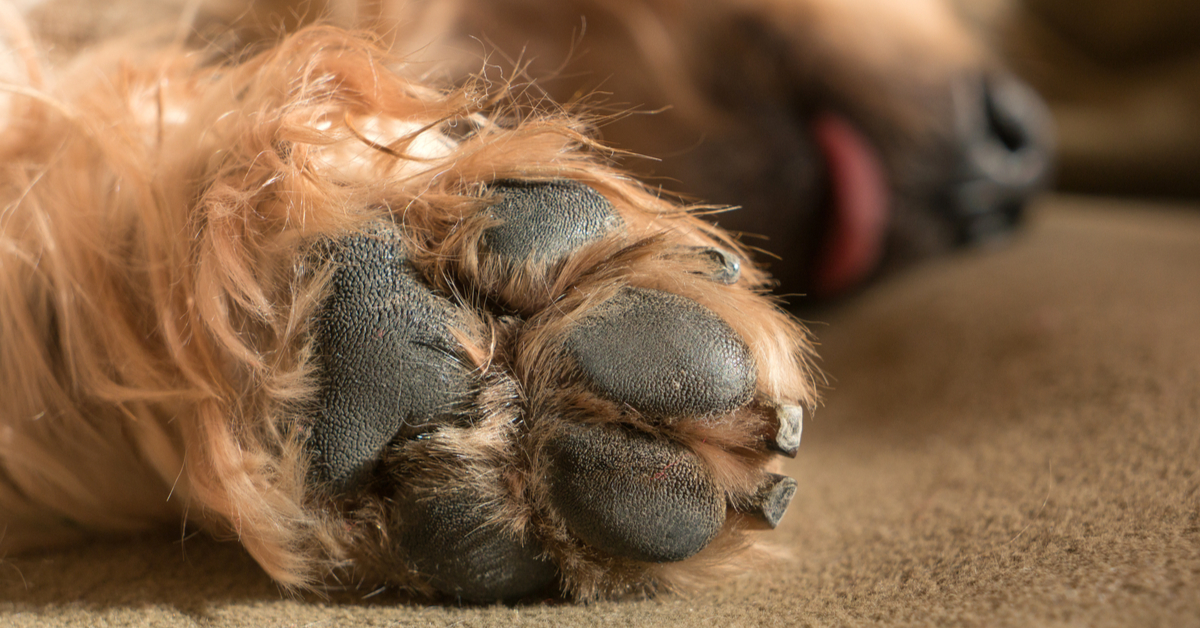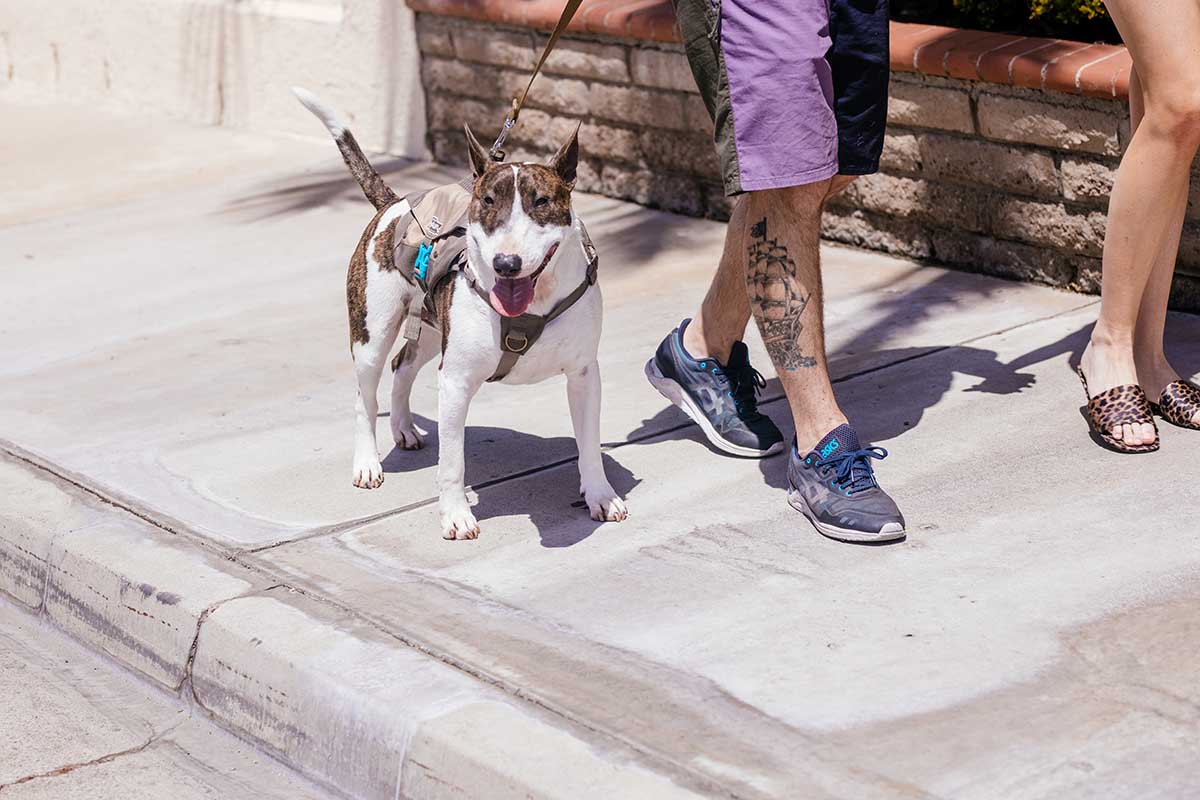Your dog has sensitive paws. This means that whether it’s very cold or hot outside, you need to provide some dog paw protection to ensure that they don’t get injured.
However, you might not know where to start. Will your pup be open to wearing dog boots? Is it OK to put moisturizer on his paws? What kind of moisturizer is safe?
By finding out the best ways to safeguard your dog, you will ensure that spending time outside is enjoyable for him no matter what season it is. You’re going to need dog paw protection in a few different circumstances, including the following:
- Cold weather (snow, ice, rock salt, etc.)
- Hot weather (dangerously hot pavement, etc.)
- Hiking rough terrain
- Protecting an injury
- Allergies
Let’s take a closer look at how to best protect your dog’s paws in each situation.
Cold Weather Dog Paw Protection

The first and most obvious time you will have to provide paw protection is in cold weather. If you live somewhere that gets cold, snowy, and icy, then your dog is going to need extra paw protection. This is because de-icers used to melt the snow like rock salt can cause a chemical burn on your dog’s paw pads, which is extremely painful.
Additionally, if your dog licks his paws and ingests the rock salt, this could be very dangerous. If he eats large amounts of it, it could be fatal. He may also develop infections and sores.
Another issue to be concerned about is snow and ice getting stuck in his paws if he has long fur, which might lead to frostbite. Plus, he could experience chapping, dryness, and cracking, since dry air and cold weather can dry out his paw pads.
Hot Weather Paw Protection

If you live in an area where there is extreme heat and hot pavement, then you’ll have to use paw protection as well. (For more information on summer safety, check out our blog post, How Hot Is Too Hot for Dogs?).
Your dog’s feet could get burned when you take him outside and he interacts with hot surfaces. You’ll know that the surface is too hot if you step on it with bare feet or you put your hand on it and you can’t leave it there for more than a few seconds.
If you can’t take him to a place with a cooler surface, like wet grass, then you should consider getting him some dog booties. Just note that you shouldn’t keep the booties on too long and you will have to take a shorter walk to avoid your dog getting overheated.
If Your Dog Has a Paw Injury
Your dog may have injured his paws and need some paw protection. If your dog’s feet have scrapes, cuts, or wounds on them, then your veterinarian might advise you to put dog shoes on him for walks to protect the area in order to promote healing. And if your pup has environmental allergies or is allergic to grass, then dog boots can help as well.
If You Like to Hike With Your Dog

If you’re a dog owner who likes to take your dog hiking or camping where there is rough terrain, such as a mountain or along rivers, then anti-slip dog boots could ensure that his feet won’t get hurt when he’s stepping over rocks and other sharp objects.
Now that you know what situations require dog paw protection, here are some tips for keeping your dog safe and comfortable when going on walks.
How to Protect Your Dog’s Paws

As you’re already aware, dog paw protectors could be extremely beneficial to your pup in many circumstances. In the winter months, you could get him non-slip shoes when you’re walking over ice so that he doesn’t slip, and make sure he has dry paws so he won’t get sick.
It’s important to get breathable dog boots for the summertime so that your pup doesn’t get too hot. You can find these on sites like Amazon – just look at customer reviews before making any purchasing decisions. It could be a good idea to check out pet products that are bestsellers as well as dog booties with Velcro straps since they may be easier to put on and take off.
When buying dog booties, the manufacturer should tell you how to measure your dog’s paws, but in general, the dog shoes should be tight enough that they stay on, but not too tight that they impede circulation. You may want to go to a store to buy shoes for your pup’s paws just so you can see how they fit.
If you’re ever in a pinch and don’t have dog booties before going on a walk, then you could try putting human or dog socks on him as well. Just be aware that a lot of dogs have trouble getting used to it, so it may be a little difficult to walk him at first. Practice at home before heading out.
Topical moisturizers for paws
During the winter, you should also moisturize your pet’s paws with dog-safe lotion or balm before you go for a walk. You could put on dog paw balm, paw wax like Musher’s Secret, moisturizer made from beeswax, and shea butter.
If you don’t have the right pet products for paw care, then you could always turn to petroleum jelly instead. You can also go about moisturizing your dog’s paws with coconut oil.
Coconut oil for dogs is also effective in hot climates as a paw soother. You can rub it on your dog’s paws after he walks on hot spots in order to relieve any irritation and burns. Before you go on the walk, you could slather on some paw wax to protect him too.
In the summer, it’s also a good practice to walk your dog when it’s cooler outside, such as early in the morning or later at night. If you do have to walk when it’s hot out, try to find cooler spots in the shade and grass.
Signs Your Dog’s Paw Pads Are Hurting

Pet owners may not know that their dogs are in pain or feeling discomfort. If your pup doesn’t want to walk or is limping, or your dog licks his paws, then he could be in pain. His paw pads might appear darker than usual and you could see redness or blisters if he’s experiencing burns.
When your dog seems to be in pain, protect his sensitive paws by picking him up and getting home as soon as possible (if you have a small dog, pop them in a backpack dog carrier). If it’s summertime and you believe he burned his paws, put a cold compress on them or run them under cold water. Just make sure he doesn’t lick the injured paw pad in order to prevent infection.
In the wintertime, if your dog has snow stuck in his paws, then dip each paw in a bowl of warm water when you get home. Then, dry each one gently with a towel.
If the situation is more serious, go to the veterinarian right away, as your pup could need medical attention.
By taking the right steps, you can prevent your dog from getting sick or being in pain on walks no matter where you’re going or what time of year it is.

